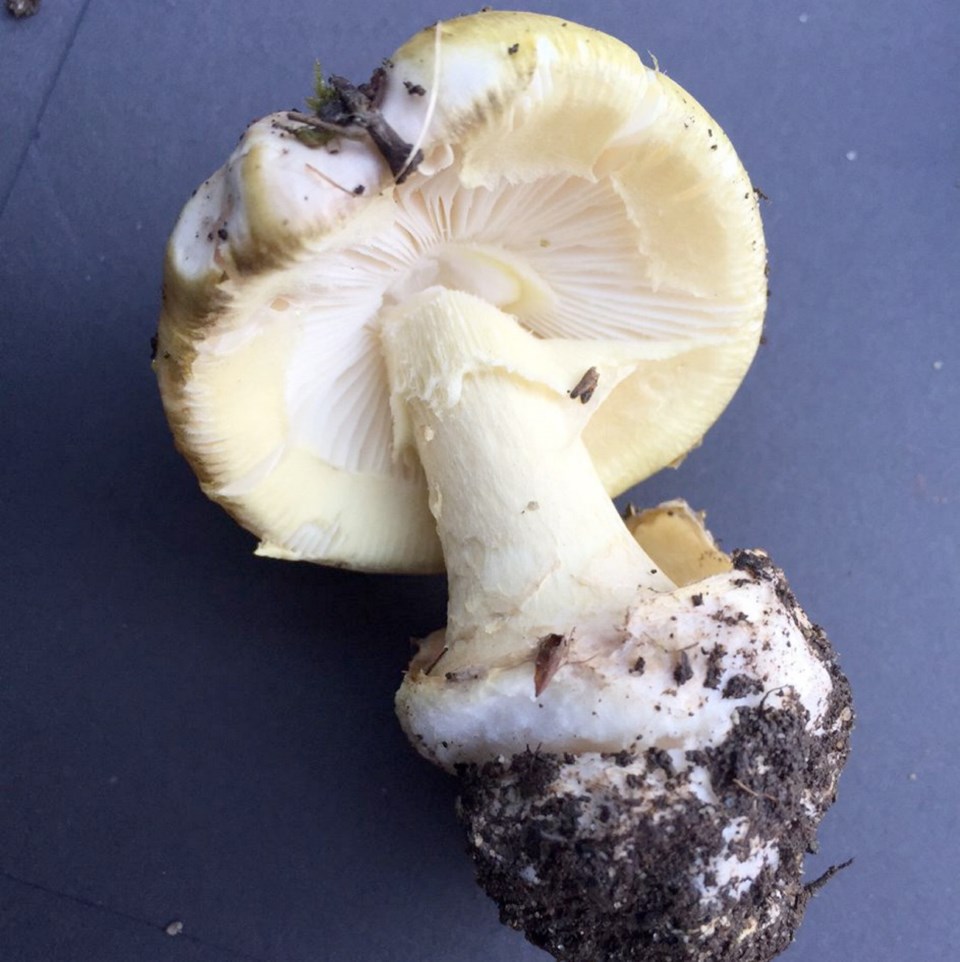Island Health is warning foragers to know their fungi, after someone was sent to hospital for eating what is believed to be one of the world’s deadliest mushrooms.
The mushroom was harvested a few days ago on a private residential property in downtown Victoria.
The individual, who Island Health has declined to identify by age or sex for privacy reasons, was flown to Edmonton for special treatment.
Chief medical health officer Dr. Richard Stanwick said officials believe the patient ingested amanita phalloides, more commonly known as “death cap” mushroom. The amanita family of mushrooms is responsible for 90 per cent of fatal mushroom poisonings worldwide, although the B.C. Centre for Disease Control said no deaths have been linked to it in the province.
The mushroom is deceivingly non-descript — mainly white with a cap that ranges from yellowish-green to light brown with a bulbous stem base.
“It actually apparently has a slightly sweet taste to it, so it doesn’t give any indication of the seriousness of the poison you’re ingesting,” Stanwick said.
Symptoms typically appear within eight to 12 hours of ingestion. The first symptoms are gastro-intestinal, including vomiting and diarrhea. Then the patient will start to feel better, before being struck by a “devastating attack on the liver,” Stanwick said.
Left untreated, a liver transplant might be required or death may occur, he said.
Stanwick spoke with the family of the patient.
“They want other families and people to know that you have to be so careful. Just because it’s growing in the city doesn’t mean it’s safe. People tend to think: ‘Oh, if I go into the wild, I’ll find all kinds of magic and poisonous mushrooms.’ Here’s one that actually could be growing in our own backyards,” Stanwick said.
Stanwick collected all remaining samples from the site Sunday, alongside an amateur mycologist. He said if the samples are confirmed as death caps, there was enough on this one property to kill 12 people.
Cats apparently don’t like mushrooms, he said, but dogs are vulnerable.
Death cap mushrooms are not native to B.C. They are believed to have been introduced through imported hardwood trees such as hornbeams. The fungus lives in the roots of trees for 40 to 50 years before emerging.
Stanwick said the best prevention is avoidance.
“As we move forward, we try to get people closer to nature and looking at growing our own vegetables and taking advantage of the abundance of wonderful, natural things available to us. It also behooves us to become very educated about what’s safe and what’s not.”
Island Health’s tips to stay safe while mushroom hunting:
• If you are unsure or uncertain, don’t eat it.
• Only pick and eat mushrooms that are well known, distinct and easily identifiable.
• Eat small amounts.
• If you suspect you’ve consumed a poisonous mushroom, call the B.C. Drug and Poison Information Centre at 1-800-567-8911 and seek medical attention or call 911. Keep a sample of the mushroom or food that was eaten.



